The Pinellas/Monroe/Miami-Dade canaries in Florida's coal mine
Iconic Florida beach counties - home to the Keys and St. Pete - lost population last year. And only massive *foreign* in-migration to Miami-Dade offset massive *domestic* out-migration.
Check out these four county-level maps of Florida population, which I created using the most recent U.S. Census county-level data release for 2023. You can interact with the charts here at Tableau Public.
Death versus birth: 51 of 67 counties are negative; Florida below state “replacement rate” at -7,603
Net domestic migration: a Miami-Dade exodus; a Polk and Pasco County bonanza
International in-migration: the salvation of Miami-Dade’s population
Total population: Pinellas and Monroe lost population in 2023.
This article is the latest in an unofficial series about Florida’s unicorn demographics and the idea of “home.” Earlier entries:
The last of those three is the most read article in the history of Public Enemy Number 1. We’ll see how this one does.
Pinellas County has St. Petersburg, which I consider one of Florida’s coolest cities. It has Pass-a-Grille and Fort DeSoto Park and some of the most beautiful beaches and loveliest beach communities in the world, where I have taken my kids many times to frolic. It has the Don CeSar resort, the Dali Museum, the Tampa Bay Rays (for now), and the historic Tarpon Springs Greek sponge docks and annual Epiphany Dive. It has Clearwater, the home of Scientology and former national Spring Break destination.
Pinellas County, is, in short, one of Florida’s most iconic, bellwether counties. It seems to be the first Florida county ever referred to as “God’s Waiting Room” because of its appeal to retirees. Here’s a reference from 1996.
Pinellas also has fewer people today than it did last year because significantly more people died there than were born there last year; and in-migration didn’t make up the difference.
In fact, Pinellas County led the nation at the county level in what the Census refers to delicately as “natural decrease” in population. That means the Pinellas balance between birth and death — between God and the waiting room — tilted toward death by 4,495 people between July 1, 2022 and July 1, 2023.
Florida state births below the “replacement” rate — and falling
And if you think Pinellas was alone among Florida counties … well, consider this from a fascinating new Census news release. Bold is my emphasis:
Five Florida counties led the nation in natural decrease: Pinellas (4,945); Sarasota (3,399); Brevard (3,044); Volusia (3,003); and Marion (2,480).
Sumter County (The Villages) wasn’t far behind, at a “natural decrease” of 1,989.
In fact, 51 of 67 Florida counties (76 percent) had negative “natural” population growth — more deaths than births — in 2023. The state as a whole had 7,603 more deaths than births in 2023.
That’s how old Florida is — by far the oldest “growth” state in America in multiple ways, as I’ve now been showing you for quite a while.
It’s true that other states are below replacement rate; but their state economies don’t depend on relentless population growth. Indeed, Florida’s state economy is likely the worst prepared in America to lose population/residency growth, of which tourism and retirement are subsets. Population growth is our only real private state industry, as a matter of policy. (Space is a niche government function, even with Elon.)
I suspect Pinellas is a harbinger, in the years and decades to come, for the population trajectory of the high-growth, coastal, increasingly expensive old counties to its southwest along the gulf coast. When the olds stop coming because it’s too expensive and too hard to get around and there are no youngs to serve them, well …
Anybody who has spent any time in Lee County (Fort Myers/Cape Coral) can tell you how it stacks up as a livable place compared to Pinellas. Not great. There isn’t much holding people there when costs and headaches start to drive them away en masse.
In a recent article about Florida’s trade youngs-for-olds state policies, I highlighted this chart from the my favorite state agency, the Florida Legislature’s Office of Economic and Demographic Research (EDR). I’d say they nailed it, wouldn’t you?
Florida’s top two “natural increase” counties — Orange and Miami-Dade both had roughly 7,000 more births than deaths. Compare that to the counties that led the nation, from the Census release:
Nationally, the counties with the highest levels of natural increase in 2023 were Harris County, Texas (34,695); Los Angeles County, California (22,216); Dallas County, Texas (19,550); Kings County, New York (14,174); and Tarrant County, Texas (13,010).
When one considers that Florida women terminate roughly 80,000 pregnancies (some from out of state) per year, you begin to see the numerical logic of forced birth. Not the morality — just the brutal logic.
The Miami-Dade COVID migration story was the *opposite* of the popular narrative
In 2023, Pinellas was the only high death Florida county that didn’t make up for the death/birth gap with in-migration from somewhere else. But it’s not the only iconic Florida county that lost population.
Brutally expensive Monroe County — of Key West and Jimmy Buffet fame — also lost population. And Miami-Dade absolutely hemorraged domestic population for the second straight year. See chart below from the Census.
Indeed, Miami’s total COVID era (April 1, 2020 to July 1, 2023) domestic out-migration was a massive 134,000 people. The Census says Miami-Dade lost total population during this time, shedding more than 26,000 people. Other analysts dispute that specific number, but not the general migration story. See discussion here.
Miami-Dade’s 2023 rate of domestic out-migration relative to its actual population was a massive 1.8 percent. That’s higher than any of the California counties on the table above. And it was a full third higher than Los Angeles County, which is almost 4X as large overall as Miami-Dade. L.A.’s outmigration percentage was just 1.2 percent.
Moreover, L.A.’s domestic out-migration is slowing while Miami-Dade’s is accelerating. That isn’t making it into any of Doofus DeSantis’ goofy talking points for gullible Fox watchers.
How did Miami-Dade narrowly avoid overall population decrease? It added 54,000 international immigrants and a 7,000-birth “natural” increase in births over deaths. That also isn’t making it into any of Doofus DeSantis’ goofy talking points for gullible Fox watchers.
So where are the domestic refugees from Miami-Dade and other coastal counties (plus metro Orlando, the bit of yellow in the middle) going?
Although I don’t have hard data confirmation, the inland, neighboring, I-4 adjacent Polk (where I live) and Pasco counties certainly seem like a logical inference. They were at the top of the domestic in-migration county numbers.
The in-flow, out-flow spread between Miami-Dade and Polk was 73,626 people in just ‘22-23. Other than Florida, only Texas had one county in the top 10 of domestic outflow (Dallas County) and one in the top 10 of domestic in-flow, for a spread of 59,000.
This intra-Florida dynamic is the most important demographic story in the state right now, by far. And it’s barely covered because media organizations do a terrible job actually thinking about population patterns and their social/economic/political implications.
But Miami-Dade shows clearly that MAGAs and capital owners alike in this state will likely need to choose between welcoming foreign immigration and accepting de-population of multiple counties and workforces in the decades to come.
What is an economy?
Florida “leaders” will also need to reckon with the fact that our state’s entire political economy is built around sacrificing the idea of lasting community and home to economic interests that don’t care about either of those things and don’t need them to make short-term money.
It’s no coincidence that Florida’s only real home-grown, high profile corporate giant is a grocery store. Tourist money, retirement money, second home money … it all buys BOGOSs from Publix the same as multi-generational Florida resident money — probably moreso, per capita. And Disney could not care less if Florida is 100 percent destination rather than home — other than its need to find cheap employees, which, well, see immigration.
If you’re a Florida native or long-time resident, the economic powers who pick your political officials do not really need you. Their narrow economy can thrive — at least in the short-term — as it drives you out of your home because of cost and the headaches that come from intentionally bad public services (especially in education and transportation).
You can see this illustrated a bit in the latest “economic overview” from the Legislature’s Bureau of Economic and Demographic Research.
For some reason, we haven’t gotten 2023 economic numbers from EDR. The January 2024 “economic overview” is still using 2022 numbers. Even so, you see something intriguing if you look closely. Florida’s wage gap finally closed a bit, coming in at 91.1 percent of the U.S. as a whole in the scorching aftermath of COVID.
But home ownership rate and single family building permits dropped:
That’s even before 2023 and the advent of higher interest rates.
If pressed, I would say an economy encompasses the broad economic conditions that make it easier or harder to make a long-term home out of the place you live. The Publix economy (Lakeland, its own home, excluded) and the Disney economy and the high-death county retiree growth economy do not help you do that. Their politics reflect that reality.
Reckoning with that contradiction — and that politics — will be the story of the next 25 years (and beyond) in Florida.

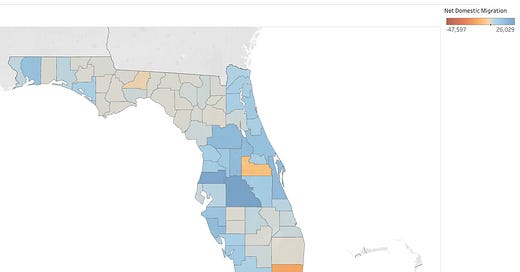


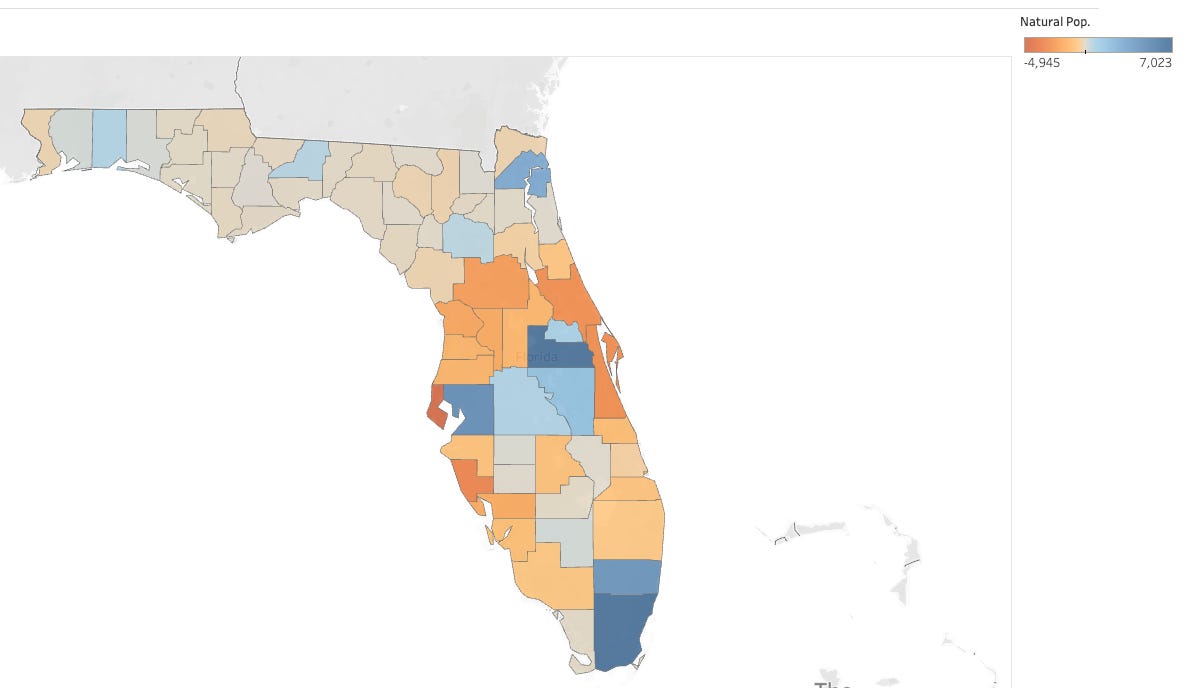

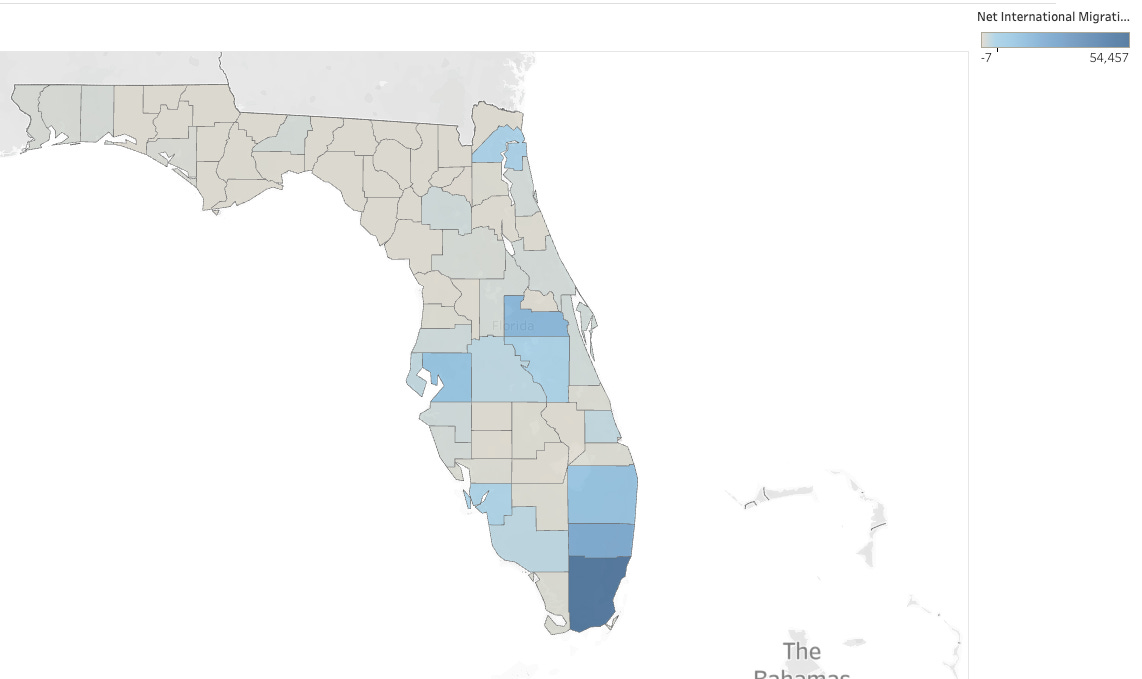

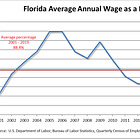
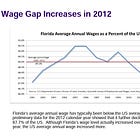
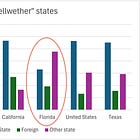
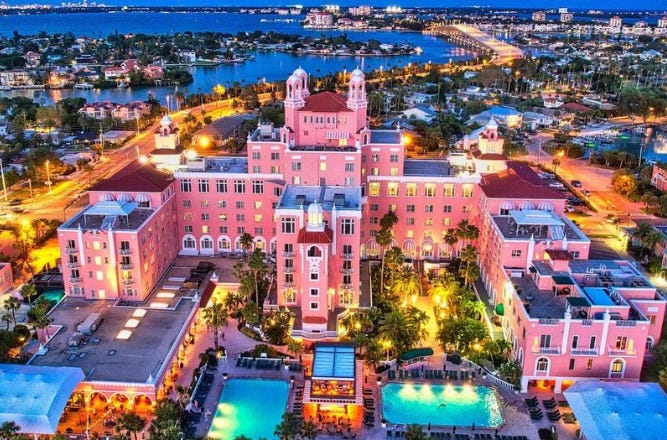
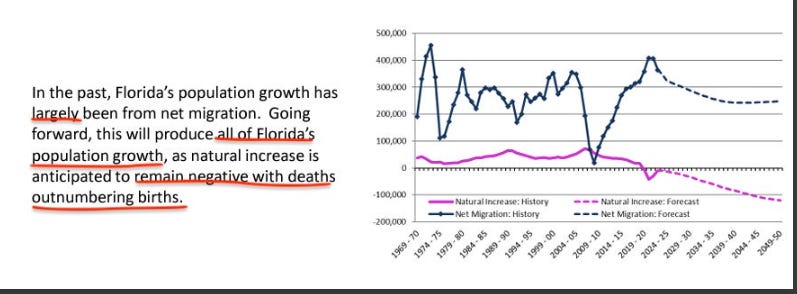
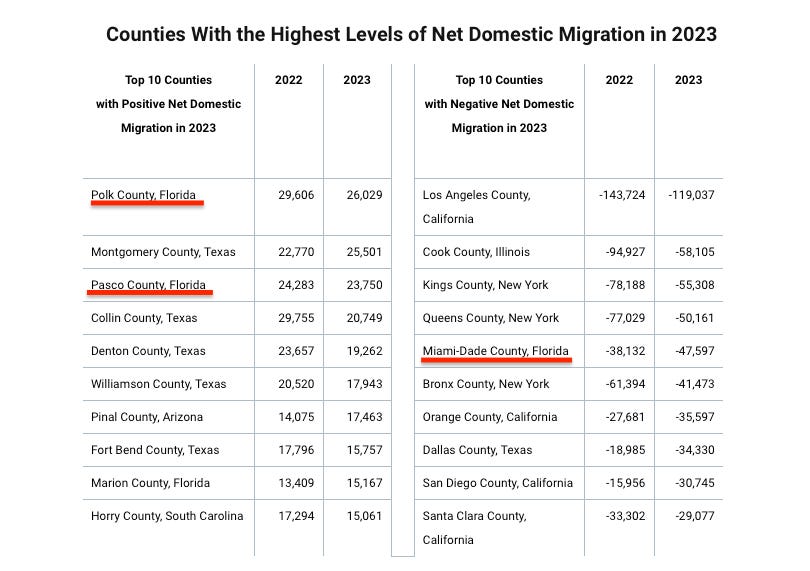
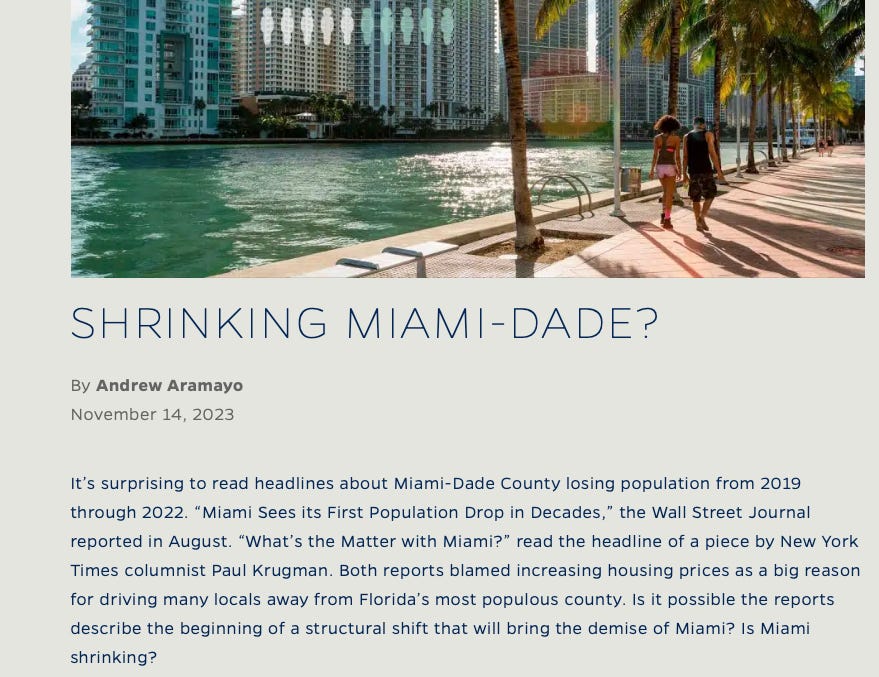
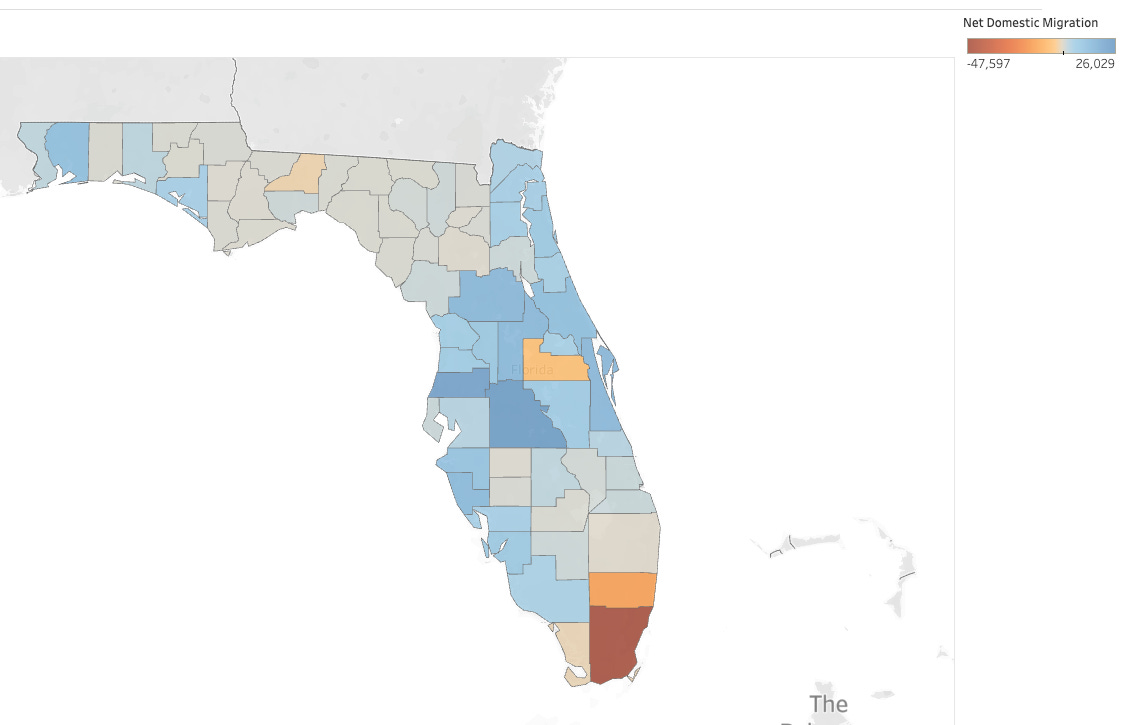
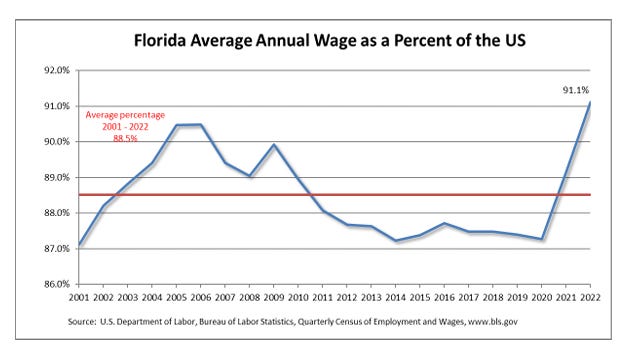
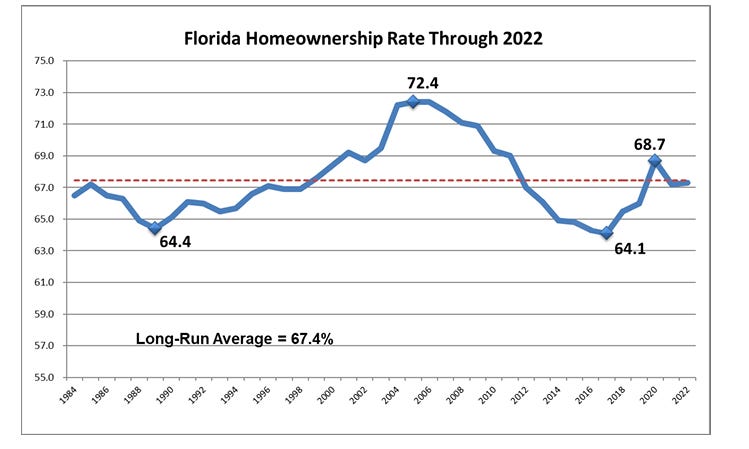
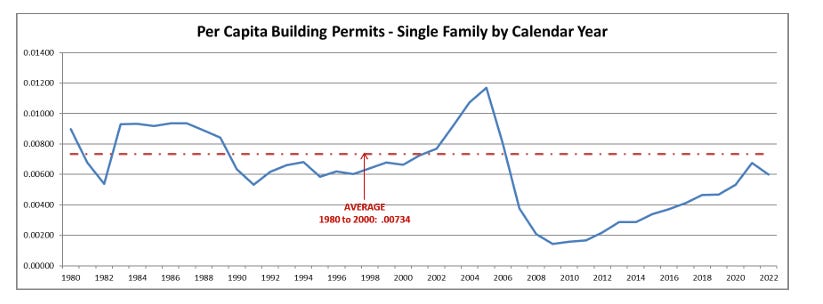
I imagine we’re close to the end of the Baby Boomer influx to Florida. What happens after that? Will the next generation have the retirement income that Boomers enjoy? Yet, they keep adding to the Villages. Yes, St. Pete is my favorite Florida city as well.
The corporate strip mining of value from our communities is going on everywhere. Florida is just particularly good at it.